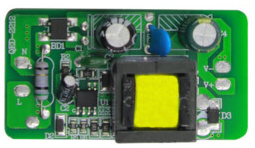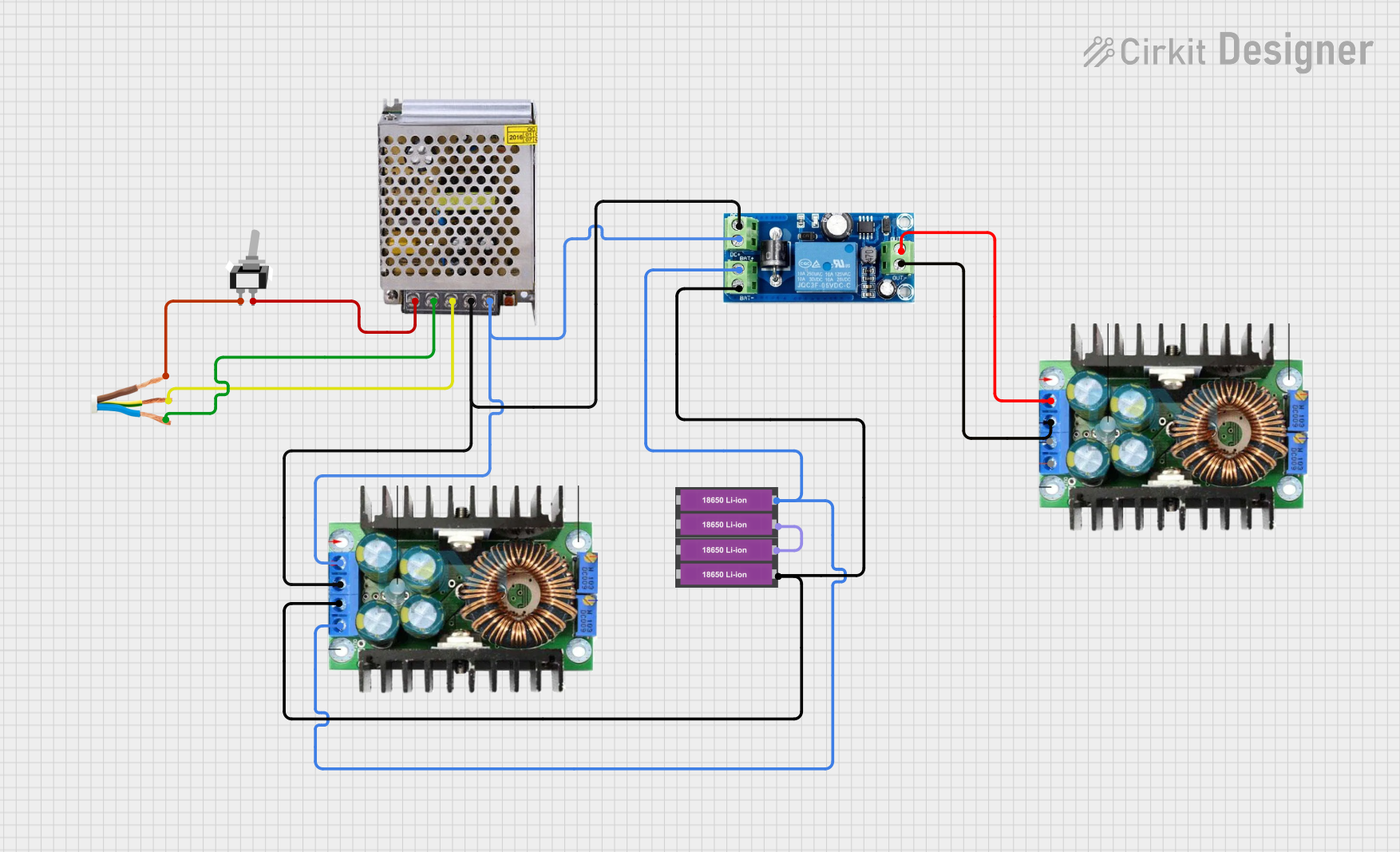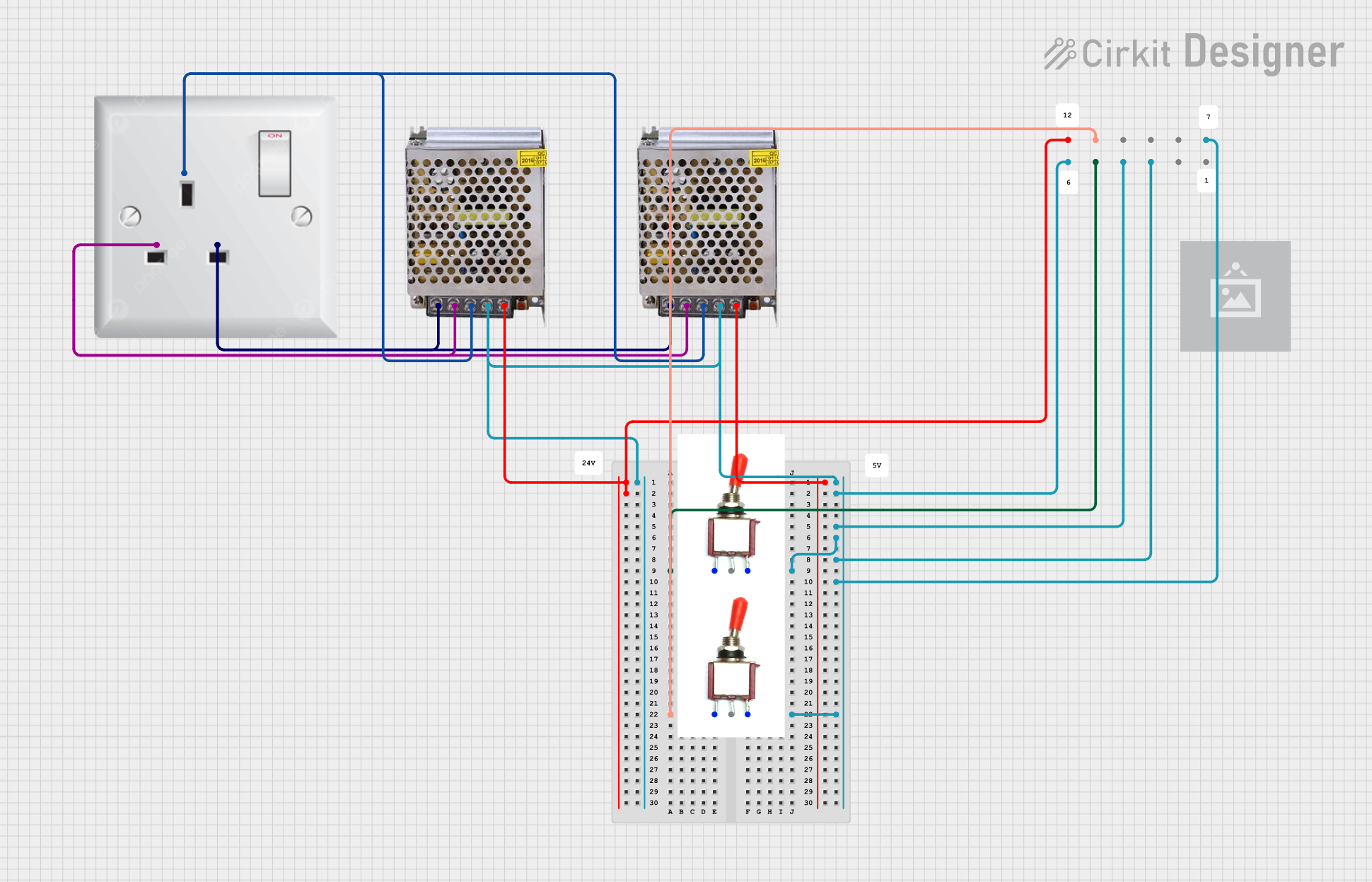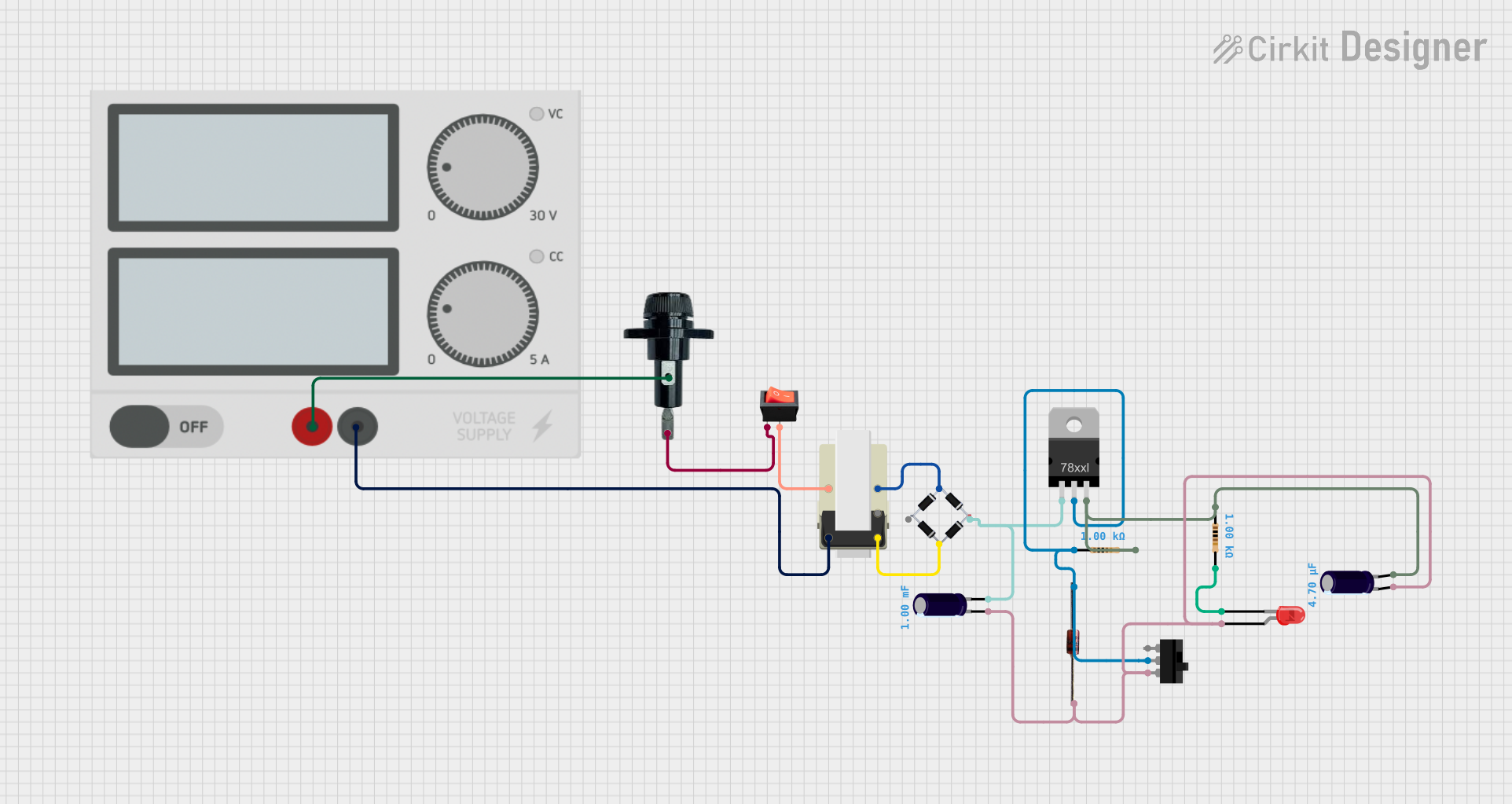
How to Use POWER SUPPLY: Examples, Pinouts, and Specs

 Design with POWER SUPPLY in Cirkit Designer
Design with POWER SUPPLY in Cirkit DesignerIntroduction
A power supply is an essential electronic component that provides electrical energy to a circuit. It converts AC or DC voltage from a source into a usable form for powering electronic components. The 12V 1A Power Supply is a compact and reliable device designed to deliver a stable 12V DC output with a maximum current of 1A. This makes it suitable for a wide range of applications, including powering microcontrollers, sensors, LED strips, and small electronic devices.
Explore Projects Built with POWER SUPPLY

 Open Project in Cirkit Designer
Open Project in Cirkit Designer
 Open Project in Cirkit Designer
Open Project in Cirkit Designer
 Open Project in Cirkit Designer
Open Project in Cirkit Designer
 Open Project in Cirkit Designer
Open Project in Cirkit DesignerExplore Projects Built with POWER SUPPLY

 Open Project in Cirkit Designer
Open Project in Cirkit Designer
 Open Project in Cirkit Designer
Open Project in Cirkit Designer
 Open Project in Cirkit Designer
Open Project in Cirkit Designer
 Open Project in Cirkit Designer
Open Project in Cirkit DesignerCommon Applications and Use Cases
- Powering Arduino boards, Raspberry Pi, and other microcontrollers
- Driving low-power DC motors and actuators
- Supplying energy to LED lighting systems
- Charging small electronic devices
- General-purpose use in low-power electronic circuits
Technical Specifications
Below are the key technical details of the 12V 1A Power Supply:
| Parameter | Specification |
|---|---|
| Input Voltage | 100-240V AC, 50/60Hz |
| Output Voltage | 12V DC |
| Maximum Output Current | 1A |
| Power Rating | 12W |
| Efficiency | ≥ 80% |
| Connector Type | DC barrel jack (5.5mm x 2.1mm) |
| Protection Features | Overload, short-circuit, overvoltage |
| Operating Temperature | 0°C to 40°C |
| Storage Temperature | -20°C to 70°C |
| Dimensions | Varies by manufacturer |
Pin Configuration and Descriptions
The 12V 1A Power Supply typically has a DC barrel jack output. Below is the pin configuration:
| Pin | Description |
|---|---|
| Center | Positive terminal (+12V DC) |
| Outer | Negative terminal (Ground) |
Usage Instructions
How to Use the Component in a Circuit
- Connect the Power Supply to the Input Source: Plug the power supply into a standard AC outlet (100-240V AC).
- Verify the Output Voltage: Use a multimeter to confirm the output voltage is 12V DC before connecting it to your circuit.
- Connect to the Circuit:
- Insert the DC barrel jack into the corresponding socket on your device or circuit.
- Ensure the polarity matches the requirements of your circuit (center positive, outer negative).
- Power On the Circuit: Once connected, turn on the power supply to energize your circuit.
Important Considerations and Best Practices
- Check Compatibility: Ensure the voltage and current ratings of the power supply match the requirements of your circuit.
- Avoid Overloading: Do not connect devices that draw more than 1A, as this may damage the power supply.
- Polarity Matters: Double-check the polarity of the DC barrel jack to avoid damaging your components.
- Ventilation: Ensure proper ventilation around the power supply to prevent overheating.
- Use Fuses: For added safety, consider adding a fuse in your circuit to protect against overcurrent.
Example: Using the Power Supply with an Arduino UNO
The 12V 1A Power Supply can be used to power an Arduino UNO via its DC barrel jack. Below is an example of how to connect and use it:
- Plug the power supply into a wall outlet.
- Connect the DC barrel jack to the Arduino UNO's power input port.
- Verify that the Arduino's power LED lights up, indicating proper operation.
Sample Arduino Code
Here is a simple Arduino sketch to blink an LED when powered by the 12V 1A Power Supply:
// This code blinks an LED connected to pin 13 of the Arduino UNO.
// Ensure the Arduino is powered using the 12V 1A Power Supply.
void setup() {
pinMode(13, OUTPUT); // Set pin 13 as an output
}
void loop() {
digitalWrite(13, HIGH); // Turn the LED on
delay(1000); // Wait for 1 second
digitalWrite(13, LOW); // Turn the LED off
delay(1000); // Wait for 1 second
}
Troubleshooting and FAQs
Common Issues Users Might Face
No Output Voltage:
- Cause: The power supply is not properly connected to the AC source.
- Solution: Check the AC connection and ensure the outlet is functional.
Overheating:
- Cause: The power supply is overloaded or lacks proper ventilation.
- Solution: Reduce the load to within 1A and ensure adequate airflow around the power supply.
Device Not Powering On:
- Cause: Incorrect polarity or loose connections.
- Solution: Verify the polarity of the DC barrel jack and ensure all connections are secure.
Intermittent Power:
- Cause: Faulty power supply or damaged cable.
- Solution: Inspect the power supply and cable for damage. Replace if necessary.
FAQs
Q1: Can I use this power supply to charge a 12V battery?
A1: No, this power supply is not designed for charging batteries. Use a dedicated battery charger for this purpose.
Q2: What happens if I connect a device that requires more than 1A?
A2: The power supply may overheat, shut down, or become damaged. Always ensure the connected load does not exceed 1A.
Q3: Is this power supply suitable for outdoor use?
A3: No, this power supply is not weatherproof. Use it only in dry, indoor environments.
Q4: Can I use this power supply with a Raspberry Pi?
A4: Yes, but ensure the Raspberry Pi model you are using supports a 12V input or use a step-down converter to provide the required 5V.